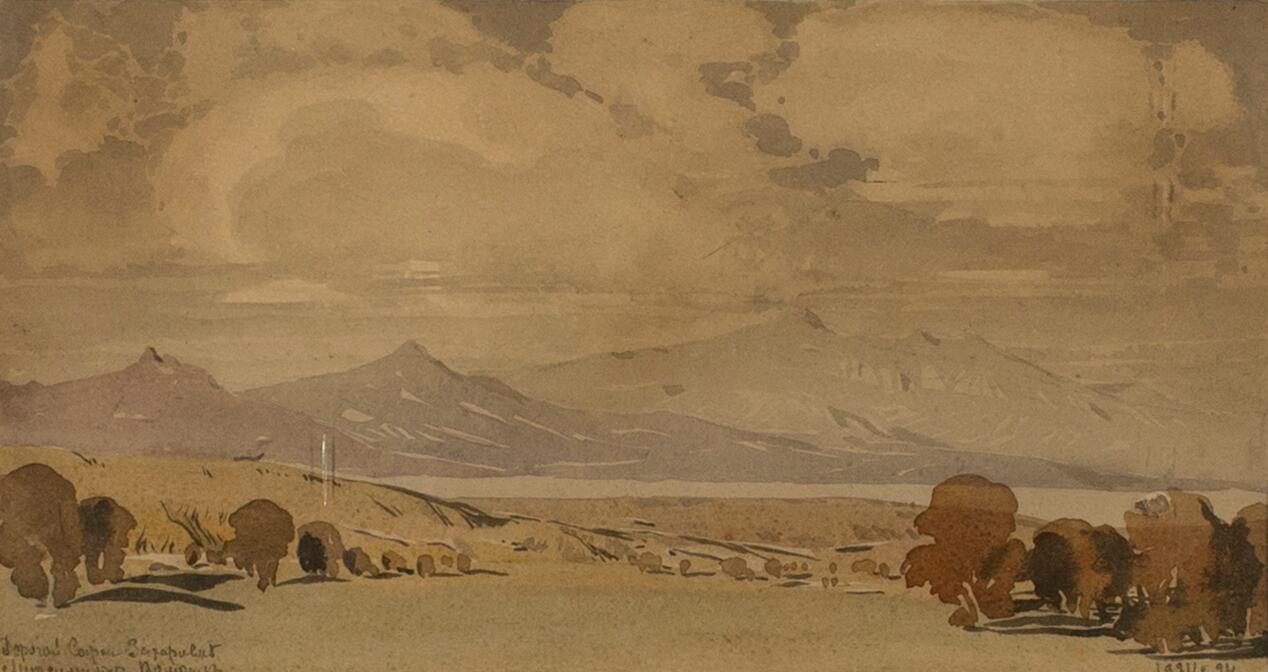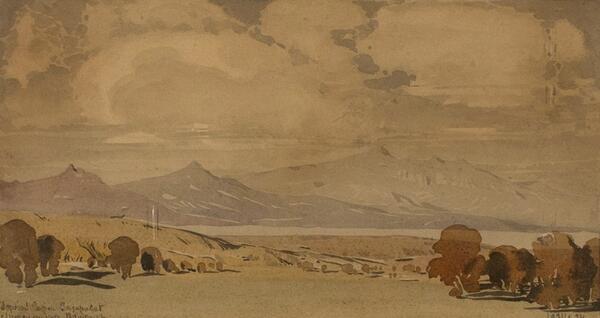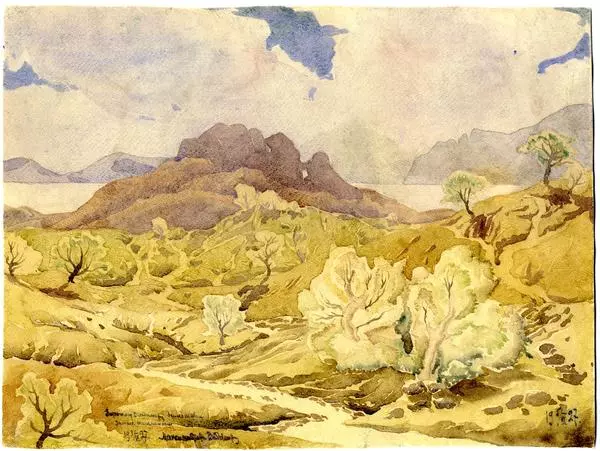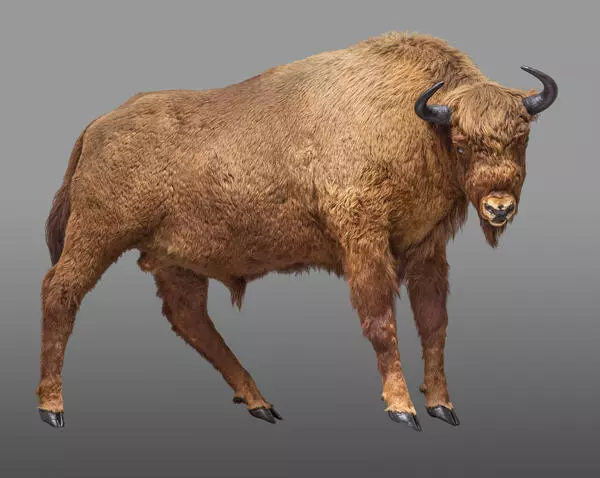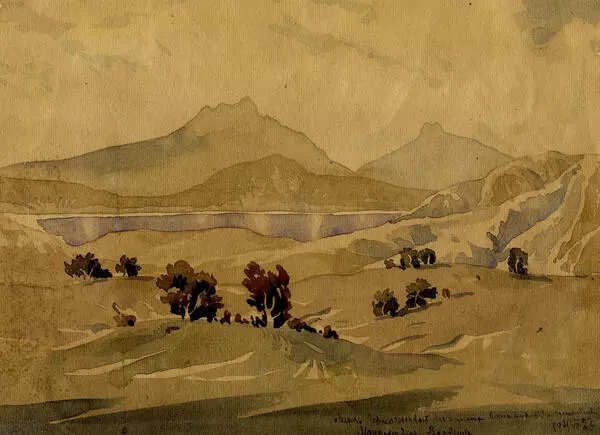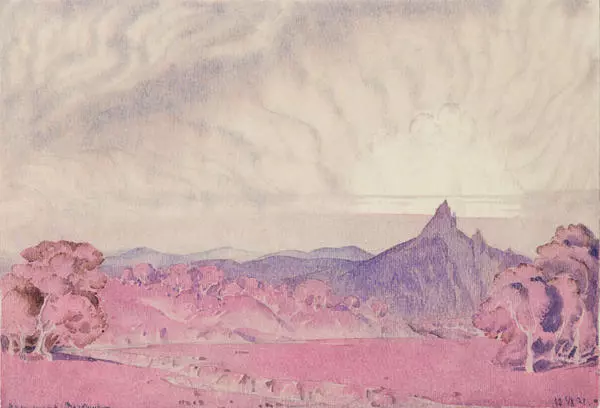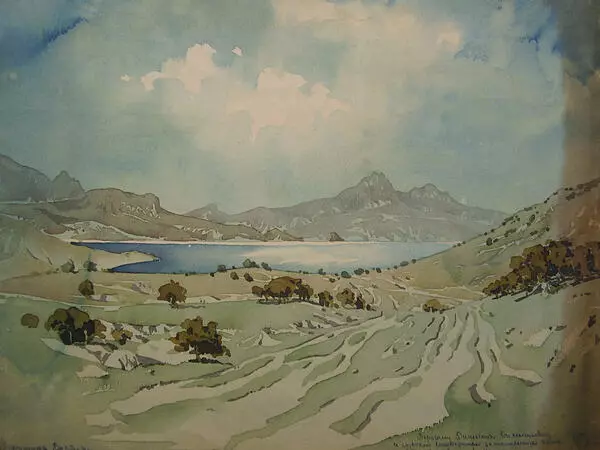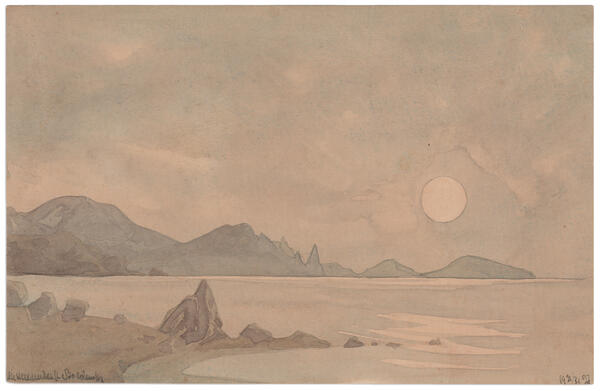Maximilian Voloshin is primarily known as a poet, literary critic and translator, but he was also an amateur landscape painter. His painting was imbued with symbolism and philosophy, which he studied as part of his literary activity. One of the many subjects in his landscapes were the views of Koktebel, where he spent his childhood and maturity. In one of his poems dedicated to Koktebel, he wrote:
I walk the mournful road to my joyless Koktebel…
On the highlands, patterned thorns and shrubs in silver.
Almonds are turning pink in the valleys in thin smoke,
And the passionate land lies in black robes and orari.
The collection of the Tarusa Art Gallery contains his watercolor ‘Koktebel’, which captures a view of the Karadag Mountain. Despite the small size of the etude, the composition seems to be monumental and conveys the feeling of great spaciousness. The artist used a contrasting color, gloomy in tones, neutral, translucent and rich dense shades of brown and gray. In the transfer of the silhouette of bluish sharpening mountains, the interpretation of nature combines the concreteness and abstractness inherent in all his landscapes. The foreground is represented by tree crowns, which are recreated with dark spots of paint. The dynamism of the landscape is given by floating banks of clouds of various shapes.
The artist perceived Crimea as a source of inspiration, a place where all the cultural images of the past merged. For him, the mountains, the sea and the endless beauty of the views of the peninsula have remained unchanged since the days of Ancient Greece. Most of his Crimean landscapes were created in the 1910-1920s and reproduced from memory. It gives the images a fabulous atmosphere, recreating the unreality and peculiarity of the Crimean nature.
I walk the mournful road to my joyless Koktebel…
On the highlands, patterned thorns and shrubs in silver.
Almonds are turning pink in the valleys in thin smoke,
And the passionate land lies in black robes and orari.
The collection of the Tarusa Art Gallery contains his watercolor ‘Koktebel’, which captures a view of the Karadag Mountain. Despite the small size of the etude, the composition seems to be monumental and conveys the feeling of great spaciousness. The artist used a contrasting color, gloomy in tones, neutral, translucent and rich dense shades of brown and gray. In the transfer of the silhouette of bluish sharpening mountains, the interpretation of nature combines the concreteness and abstractness inherent in all his landscapes. The foreground is represented by tree crowns, which are recreated with dark spots of paint. The dynamism of the landscape is given by floating banks of clouds of various shapes.
The artist perceived Crimea as a source of inspiration, a place where all the cultural images of the past merged. For him, the mountains, the sea and the endless beauty of the views of the peninsula have remained unchanged since the days of Ancient Greece. Most of his Crimean landscapes were created in the 1910-1920s and reproduced from memory. It gives the images a fabulous atmosphere, recreating the unreality and peculiarity of the Crimean nature.
